Traditional Tajik Dishes to Try
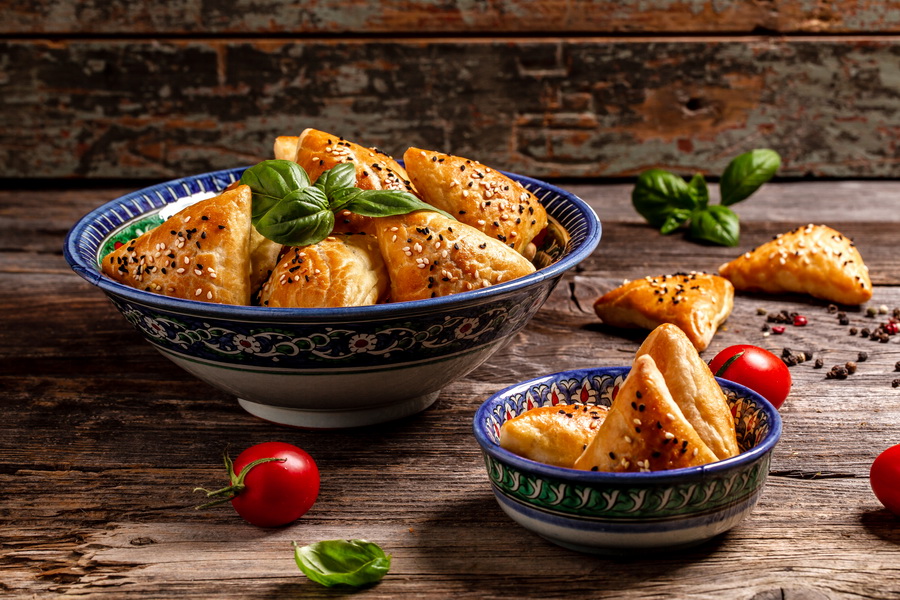
Tajik cuisine has evolved over the course of ten centuries. It remains very distinct from the cuisines of neighboring countries and never fails to satisfy with its unique variety of tastes. If you enjoy meat dishes, fresh salads, sweets and pleasant conversations over tea, we recommend a trip to Central Asia to discover for yourself these 10 Tajik dishes you have to try:
Kurutob
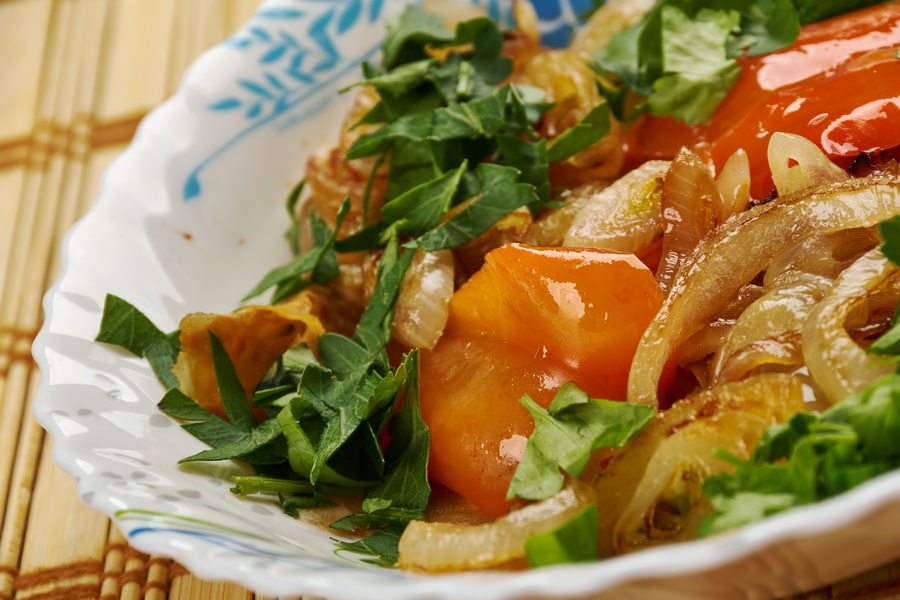
Ask anyone in Tajikistan which traditional Tajik dishes to try and their first response is sure to be kurutob, the most famous and beloved Tajik meal.
The name kurutob is derived from the words “kurut” and “ob”. "Ob" means water and kurut are dried, salty balls made from fermented sheep, goat or cow milk. Kurut is rich in calcium and vitamins and can be stored for several years without losing its beneficial properties.
To make kurutub, kurut is first crushed and diluted with water until completely dissolved. Cucumbers, tomatoes and greens are then sliced and chopped onions are fried in linseed or cottonseed oil.
Kurutob is served in a shallow wooden dish called a “tobacco tawak”. The bottom of the dish is lined with torn pieces of fresh Tajikistan bread called fatir and the dissolved kurut is poured on top, followed by the tomatoes, cucumbers and fried onions. Hot melted butter is then poured over the meal and herbs are sprinkled on top as a finishing touch.
Although the basic ingredients remain the same, kurutob is prepared differently in each region of Tajikistan. For example, in some regions meat is added and in other places the onions are omitted. Since kurutob in Dushanbe will taste different than in Bokhtar and elsewhere, we recommend sampling this dish in every city that you visit!
Pilaf (plov)
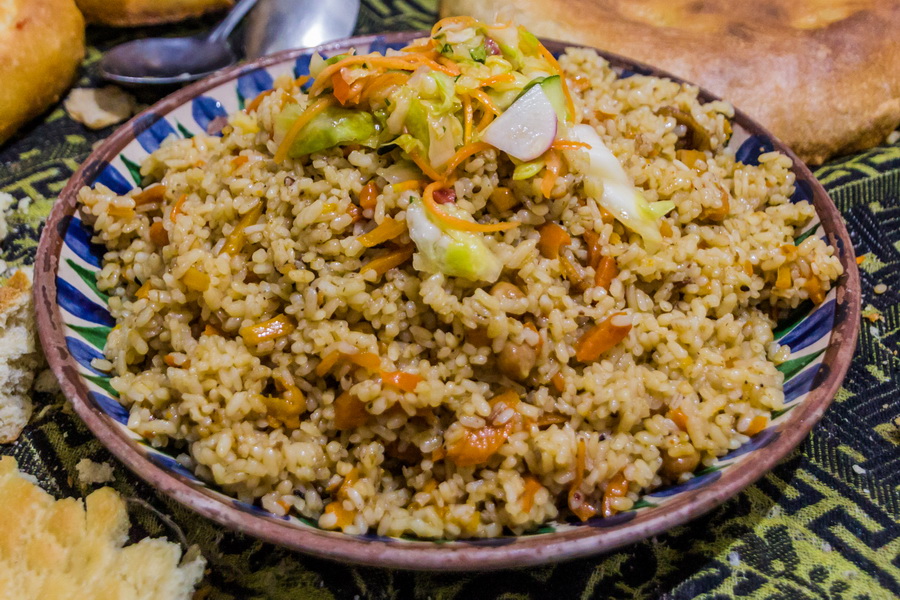
In Tajikistan pilaf (also called plov or osh) is served for special occasions, be it a wedding for several hundred guests or a birthday party with a few family members.
The key for proper pilaf is white rice with a low starch content. When cooked, the rice should not stick together or be mushy like porridge. Proper pilaf can be made with several varieties of Tajik and Uzbek rice, including devzira, alanga, oshpar and laser.
Cottonseed oil and occasionally linseed oil is used to cook Tajikistan osh. It is believed that proper pilaf can only be made with oil that has been overheated, i.e. heated in a dry cast-iron pot until it begins to smoke.
Before cooking pilaf, the rice should be rinsed in water several times to remove excess starch and then soak in salted water for 2-3 hours. Next, fry the onion slices before adding the meat. (Lamb is most traditional but beef is also increasingly common). Wait until the meat is golden brown and then add chopped carrots; in Tajik pilaf, special yellow carrots are usually used. The meat, carrot and onion mixture, called zerbak, forms the basis for pilaf and so must be cooked correctly. The zerbak is then doused with water and flavored with spices. After it has simmered the rice is added, covered with water and cooked until the water evaporates.
Pilaf in Tajikistan is often known by the city in which it is made. Popular varieties include Khujand or Sogdian (valley pilaf), Dushanbe, Badakhshan (Pamiri), Isfara, Penjikent and Kulob pilaf. Regar pilaf, which is prepared in Tursunzoda, is famous for the addition of dried red pepper and coriander. In Khujand pilaf, quail meat is often used. Kulob pilaf is made with pistachios, pomegranate seeds and round-tipped carrots because they are sweeter. In some Tajikistan plov recipes it is customary to fry the zerbak, while in others it should stew; in some places barberries and raisins are always added, and elsewhere they prefer dried apricots. Instead of red meat some pilaf may contain poultry, and instead of rice it may be cooked with wheat, peas, corn or mung beans.
Tajik cuisine also includes less traditional types of pilaf including ugro pilaf, cooked not with rice but with homemade noodles shaped like grains of rice; macaroni pilaf, made with store-bought noodles when you are short on time; and gelak-palav, which is cooked with meatballs.
Chakka
This fermented milk dish is drunk at every feast, added to soups and main courses or simply put on the table as a sauce.
Making chakka is not difficult: you just need to boil milk, cool it to room temperature and add the leaven. Wrap the mixture in clean gauze and hang it on a hook so that all of the excess liquid can be drained, a process with usually takes 8-10 hours.
Herbs such as finely chopped dill, mint and basil are added to chakka when used as a sauce for meat. There is also a vegetable chakka which is made by finely chopping cucumbers, tomatoes, cabbage and bell peppers and pouring chakka over them.
Dugob (cholob)
Dugob, or cholob, is the national drink of Tajikistan. Although easily digested, good for the intestines and touted as a cure for hangovers, those with ulcers and gastritis are advised to avoid this drink.
To prepare dugob, chakka is diluted in equal portions with carbonated or boiled water and whipped until a light foam has formed. Many houses have a special device called a chahdek, a jug-like container with a whipping stick which is used for making dugob. In summer it is customary to add salt, mint and ice to this drink. Fruit dugob with pear and apple is also common.
Hom-shurbo
This Tajik food is popular even with picky children. The day before making hom-shurbo, you need to soak the hob (chickpeas) in warm boiled water, which will cause them to swell and cook faster. The chickpeas and meat (lamb or beef with a little fat) are covered with water over high heat. When a foam appears it should be discarded. The heat is then reduced and the broth left to simmer for 1-1.5 hours. Chop potatoes and carrots into large pieces and finely chop an onion. Add the vegetables to the broth, cooked meat and chickpeas. When the potatoes are tender, add tomatoes, bell peppers and spices. After another 5-10 minutes your hom-shurbo will be ready to eat!
Murkabob
Tajik poultry dishes are rare, which is why murkabob, a tender roast made from chicken, quail or partridge, is one of the 10 Tajik dishes you have to try.
The bird is cut into small pieces, rubbed with garlic, salt and pepper and left to marinate. Carrots and onions should be chopped separately and potatoes cut into four pieces.
The secret to a good murkabob is to cook it with tail fat. The fat is melted in a pot and the bird placed inside. When it acquires a golden color, add the onions, carrots and potatoes and cover it all in water. Bring to a boil and simmer over low heat until cooked. Be sure to come to the dinner table hungry!
Sambusa
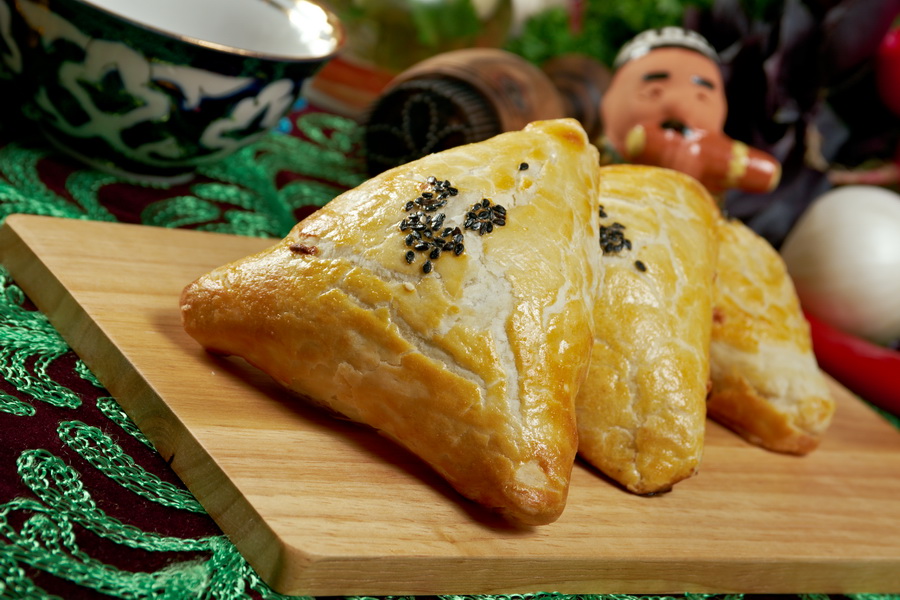
Sambusas are savory Tajik pies cooked in a clay tandoor (tanur) oven which are great for breakfast, lunch, dinner or as a snack with a cup of Tajikistan tea. The dough for sambusas is made from flour, water, salt and vegetable oil and either with or without yeast. The filling can be made from anything you like, although meat is the most popular choice.
Many varieties of sambusas are baked in Tajikistan, including:
Sambusa varaki, a meat-stuffed flaky pastry with fat added to the dough;
Waraki, which are usually triangular in shape and sprinkled with sesame seeds;
Sambusa gijda, which are similar to waraki but without the added fat. The dough should be well greased with butter;
Sambusa tandoori, made from a yeast-free dough and minced meat. This sambusa is baked in a tandoor oven and is usually moistened with water so that it will stick to the walls of the clay oven.
Sambusa bodomi, which resemble homemade sambusas and have fried onions added to the meat;
Sambusa katra, a teardrop-shaped pie which can be as large as a man’s palm. It is customary to spread a thin, solid layer of lamb fat on the meat filling, which dissolves into a broth when baked. This sambusa is very juicy and should be eaten while hot.
Rose-shaped sambusas differ not only in their form but also in their filling. Chicken, onions and tomatoes are placed in the center of the rolled dough, which should not completely cover the filling when folded. Grated cheese can then be added through the small “window” which is left open.
Other types of sambusas are stuffed with peas, herbs, tofu, pumpkin and other vegetables.
Lubieva
In both the Tajik and Georgian languages the word “lubyio” means “beans”. “Lubieva” is a derivative of "lubiyo" and "ob" (water). One of the best vegetarian foods in Tajikistan, this is a sweet soup made from beans, sugar beets and wheat. The most delicious variety is prepared in Tajikistan’s Rasht District.
It is difficult to make this dish at home because it is so time-consuming. The beans must be soaked in warm, boiled water either the day before or overnight. To make the broth, meat on the bone is boiled for a very long time over low heat. Separately, onions are fried and wheat is put through a meat grinder. All of the above ingredients and some sugar beets are added to the broth and cooked until the beans are soft.
Traditionally, lubieva is cooked in a national oven called a degdon. Before serving, several pieces of flatbread are placed in a large bowl. The lubieva is then poured on top and the dish is garnished with parsley and dill.
Pashmak
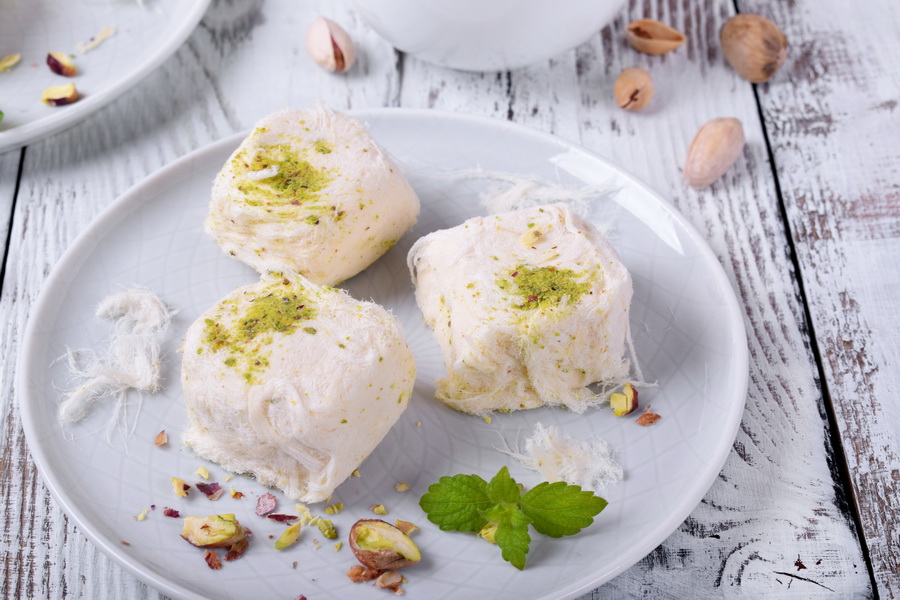
This dish is also eaten in neighboring countries but in Tajikistan is a must-try. Pashmak is a sweet flour halva in the form of thin white threads rolled into an oblong ball. When made correctly, pashmak simply melts in your mouth.
To prepare this dish, sugar is dissolved in a small amount of water. Citric acid is then added and the liquid is boiled. Flour and melted butter are mixed in a separate bowl before being thoroughly combined with the liquid. The resulting mass is pulled into thin threads and sold as an edible skein of yarn.
Mulberry Halva
The last on our list of traditional Tajik dishes to try, and the first among health fanatics, is mulberry halva.
The leaves of the mulberry tree are eaten by silkworms, whose pupa is used for the production of silk. Mulberry trees produce very sweet fruits which contain vitamins, phosphoric, malic and citric acids, iron, fats and proteins. The fruit, leaves and juice of the mulberry tree are all beneficial in the treatment of cardiac diseases, gastrointestinal issues and other ailments.
To make this Tajikistan dessert, the berries of the white mulberry tree are dried, crushed and combined with nuts, dried apricots, honey, flax, ginger or other ingredients. Mulberry halva does not contain any chemical additives and can aid in weight loss.
Thanks to the unusual combination of products and spices, every meal in Tajikistan can be a fun culinary adventure!

